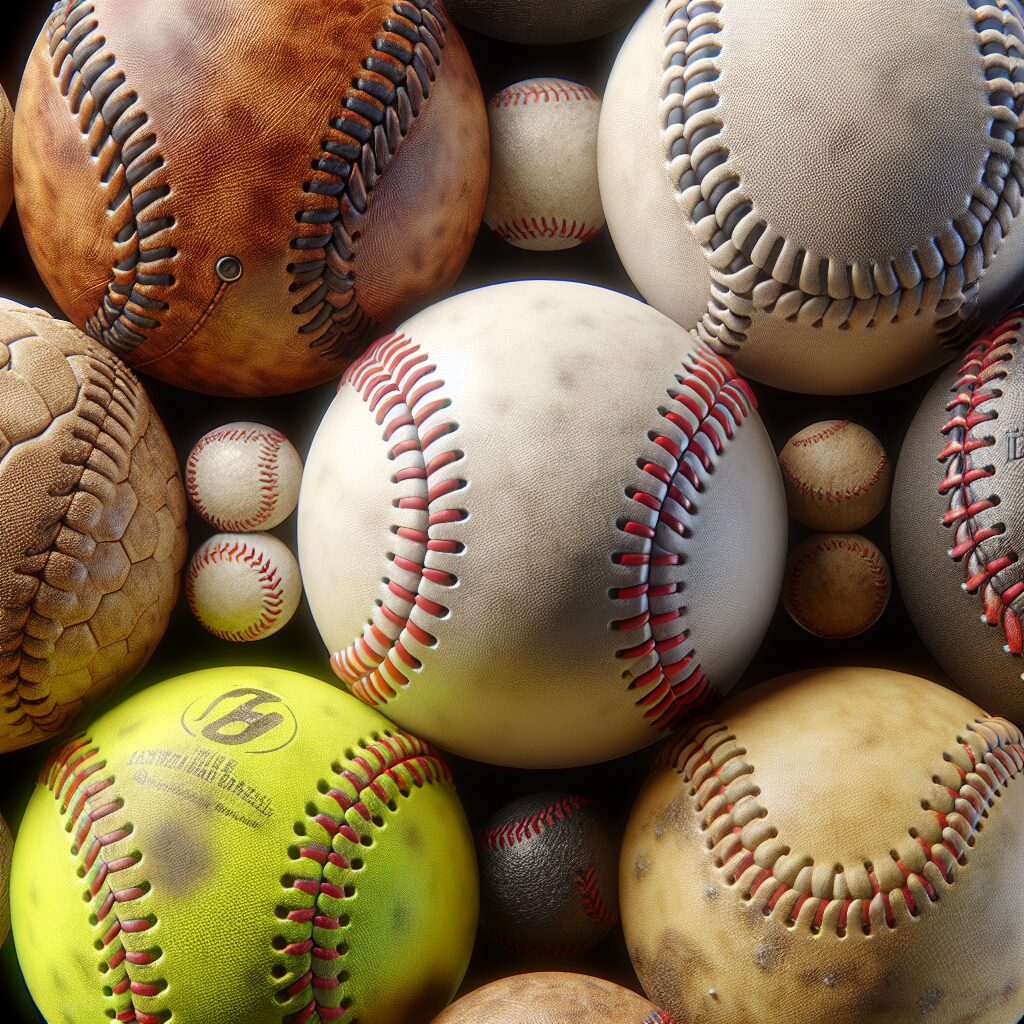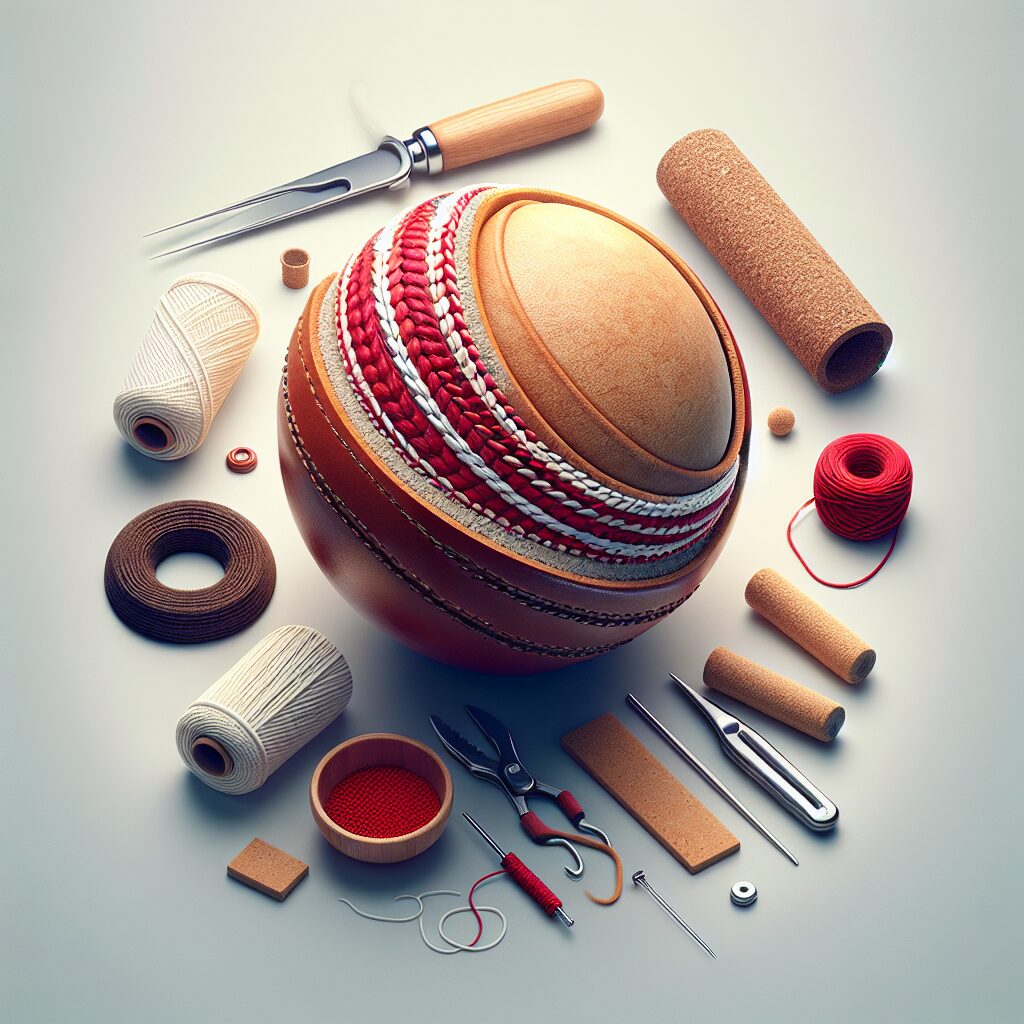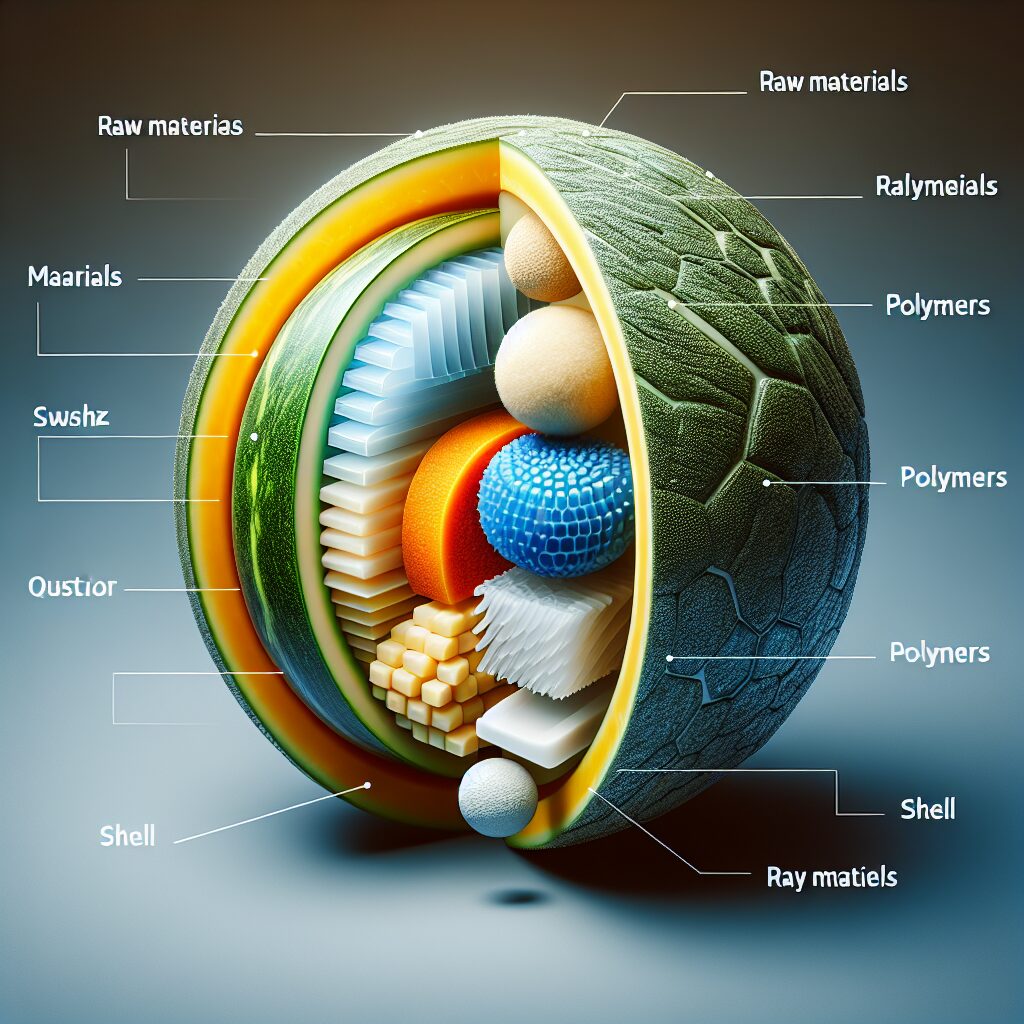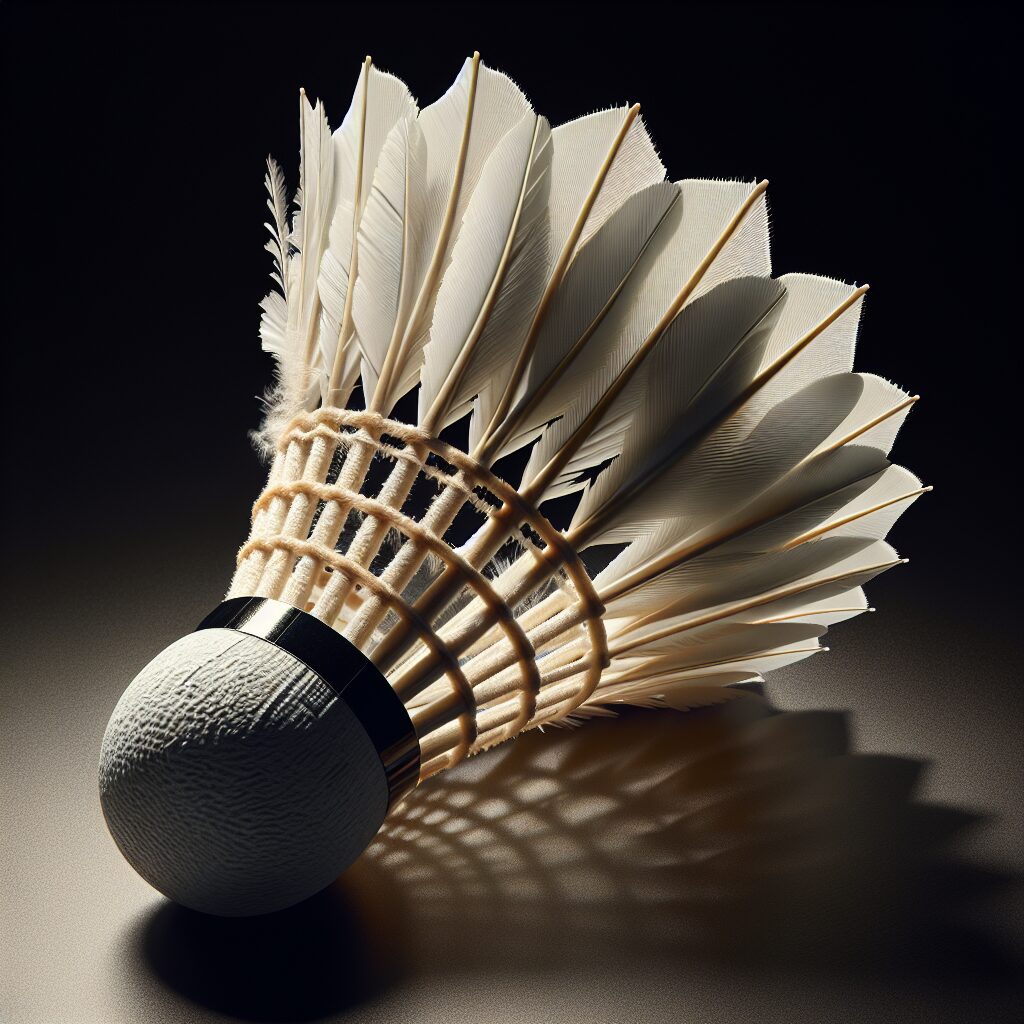Choosing the right cover materials for softballs is a critical aspect of the game. Softballs are not just for recreational activities; they are also used in competitive leagues and tournaments. The cover material of a softball can greatly impact its performance and durability.
One key factor to consider when selecting cover materials is the ball’s grip. The type of material used for the cover can affect how well players are able to grip and control the ball during throws and pitches. Certain materials, such as synthetic leather, provide a better grip and allow for more accurate and controlled throws. On the other hand, other materials may be more slippery and make it harder to maintain a firm hold on the ball.
Another important consideration is the durability of the cover material. Softballs are subjected to rigorous use, with constant impact and friction against bats and the ground. Choosing a cover material that is durable and can withstand these conditions is crucial to ensure the longevity of the ball. Factors such as the thickness of the cover and the quality of the material used can significantly impact the ball’s durability.
In the upcoming sections, we will delve into the different types of cover materials commonly used for softballs and discuss their unique features and impacts. Whether you are a recreational player or a professional athlete, understanding the characteristics of various cover materials can help you make an informed decision when selecting the right softball for your needs. So, let’s explore the key takeaways on cover materials for softballs in order to enhance your performance on the field and maximize the lifespan of your equipment.
Key Takeaways
1. The cover material of a softball greatly affects its performance, durability, and cost, with options including leather, synthetic materials, and hybrids.
2. Leather softballs, made from cowhide or buffalo hide, offer excellent performance and durability but come with a higher price tag.
3. Synthetic softball covers, often made from polyurethane or synthetic leather, are more affordable but may not provide the same performance or longevity as leather options.
4. Hybrid softball covers, combining both leather and synthetic materials, offer a compromise between performance, price, and durability.
5. Factors to consider when choosing a cover material include the level of play, budget, playing conditions, and personal preferences, making it crucial to weigh these variables before making a selection.
What are the Best Cover Materials for Softballs?
Understanding the Importance of Cover Materials
The cover material of a softball plays a crucial role in its performance and durability. It is responsible for providing grip, durability, and determining how the ball reacts when hit or thrown. Choosing the right cover material is essential to ensure that the softball meets your specific needs and performs optimally. Here are some factors to consider when selecting cover materials for softballs.
Leather Covers: The Classic Choice
Leather has been the traditional cover material for softballs for many years, and for a good reason. Genuine leather covers offer superior quality, durability, and a great feel. They provide excellent grip and allow for better control during pitching and hitting. However, leather covers require proper maintenance and can be expensive compared to other options.
Synthetic Covers: A Durable Alternative
For those who want a more cost-effective and low-maintenance option, synthetic covers are worth considering. These covers are typically made of a composite material, such as polyurethane or vinyl. They offer good durability, resistance to moisture, and require less maintenance compared to leather covers. Synthetic covers may lack the same level of grip as leather, but they can still perform well for recreational and casual play.
Rubber Covers: Ideal for Recreational Use
Rubber covers are commonly used for recreational softballs due to their affordability and durability. They are less expensive than leather or synthetic covers, making them accessible for casual players or beginners. Rubber covers provide a good grip and are suitable for games played on various surfaces. However, they may not offer the same level of performance or feel as leather or synthetic covers.
Factors to Consider
When choosing the right cover material for your softballs, there are a few factors to keep in mind:
Intended Use:
Consider the purpose of the softball. Are you playing competitively or recreationally? Different cover materials are suitable for different levels of play.
Budget:
Determine the amount you are willing to invest in softballs. Leather covers generally have a higher cost compared to synthetic or rubber covers.
Playing Conditions:
Consider the playing conditions you will encounter. If you often play in wet or humid environments, a cover material that offers moisture resistance is desirable.
Grip:
Evaluate the level of grip you require. Leather covers generally provide the best grip, while rubber covers may offer less traction.
Desired Softball Feel:
Think about the texture and feel you prefer in a softball. Leather covers usually provide a more natural and tactile experience.
Guidelines for Choosing the Right Cover Materials
To ensure you select the right cover materials for your softballs, here are some guidelines to follow:
1. Assess your needs: Determine the level of play, budget, and preferred performance characteristics.
2. Consider durability: Choose a cover material that can withstand the intensity and frequency of use.
3. Test the grip: If possible, try out softballs with different cover materials to evaluate the grip they provide.
4. Seek recommendations: Consult experienced players or coaches for advice on the best cover materials.
5. Read reviews: Take the time to research and read reviews of different softballs with various cover materials to make an informed decision.
Conclusion
Choosing the right cover materials for softballs is essential to achieve optimal performance and longevity. Evaluate factors such as intended use, budget, playing conditions, grip, and desired feel to make an informed decision. By following the guidelines provided, you can ensure that you select the ideal cover material for your softballs and enjoy a great playing experience.
Frequently Asked Questions:
1. What are the different types of cover materials used for softballs?
Softballs are typically covered with either leather or synthetic materials. Leather covers are considered traditional and offer a great feel and grip, while synthetic covers are more durable and can withstand harsher weather conditions.
2. Which cover material is better for recreational players?
For recreational players, synthetic covers are often recommended as they are more cost-effective and require less maintenance compared to leather covers. Synthetic covers are also more resistant to wear and tear, making them ideal for casual games.
3. Are there any benefits of using a softball with a leather cover?
Softballs with leather covers offer superior grip and control, allowing players to have better accuracy when throwing or pitching. Leather covers also provide a more authentic feel and are often preferred by serious players and professionals.
4. Do cover materials affect the performance of the ball?
Yes, the cover material can significantly impact the performance of the ball. Leather covers tend to have a softer feel and may yield better results in terms of hitting distances and ball flight. Synthetic covers, on the other hand, offer more consistent performance and are less affected by weather conditions.
5. Can I use a softball with a leather cover in wet or rainy conditions?
It is not recommended to use softballs with leather covers in wet or rainy conditions as the leather can become slippery and affect the grip. Synthetic covers are more water-resistant and can withstand moisture without compromising the game.
6. Are there any specific regulations regarding cover materials in softball leagues?
Softball leagues typically have regulations on acceptable cover materials. It is important to check with your league or organization to ensure you are using a softball with a cover material that meets their requirements.
7. How often should I replace the cover of my softball?
The lifespan of a softball cover depends on factors such as usage, storage conditions, and quality of the cover material. Generally, it is recommended to replace the cover when signs of excessive wear, tearing, or loss of grip are evident.
8. Can I personalize the cover of my softball?
Some softball manufacturers offer options for personalization, such as adding a custom logo or player name. However, it is important to check the rules and regulations of your league or organization, as they may have restrictions on personalized covers.
9. Are there any eco-friendly options for softball cover materials?
Yes, there are eco-friendly options available for softball cover materials. Some manufacturers produce softballs with recycled or sustainable materials, which can be a great choice for environmentally-conscious players.
10. How can I determine the right cover material for my specific needs?
Choosing the right cover material for your softball depends on factors such as your playing level, budget, preferred feel, and durability requirements. It is recommended to try out different options and consult with experienced players or coaches to determine the best fit for your needs.
Final Thoughts:
Choosing the right cover material for softballs is crucial in ensuring an optimal playing experience. Whether you opt for a traditional leather cover or a more durable synthetic material, it is important to consider factors such as personal preferences, playing conditions, and league regulations. Experimenting with different cover materials can help you find the perfect fit that enhances your performance on the field.
Remember, softballs are designed to be reliable and provide consistent performance, so selecting the right cover material can make a significant difference in your game. Stay informed about advancements in cover materials and regularly evaluate the condition of your softball to ensure you’re always playing with the best materials available. With the right cover material, you’ll be able to enjoy the game to its fullest and unleash your true potential as a softball player.




